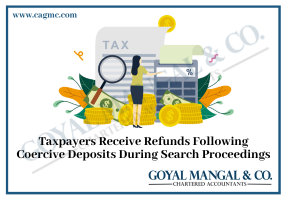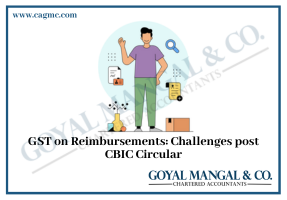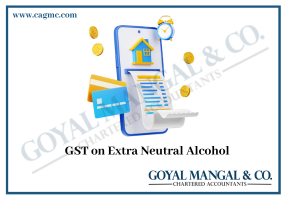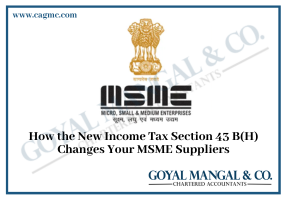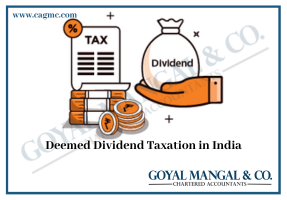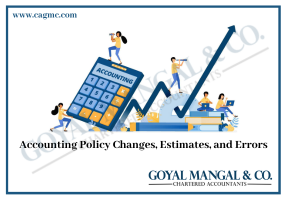
Revenue recognition is one of the most important accounting principles that can have a direct impact on a company’s financial performance. Ind AS 115 lays down new requirements and rules in many aspects of revenue recognition that are either new or significantly different from the accounting principles under existing revenue recognition standards. In this article, we will discuss IND AS 115 – Revenue Recognition.
|
Table of Contents |
Overview of IND AS 115 – Revenue Recognition
IFRS 15, a new standard, creates a uniform model for accounting for revenue from contracts with customers. India has issued the corresponding converged standard Ind AS-115 “Revenue from Contracts with Customers”. This standard will supersede Ind AS-11 ‘Construction Contracts’ and Ind AS-18 ‘Revenue’ and related annexes to these two standards except for service concession arrangement which has become an integral part of Ind AS-115 as Annexure ‘C’.
Revenues are defined as income arising during the normal operation of an accounting entity’s activities. The conceptual framework introduced “income” with increase economic benefits (i.e. inflow or appreciation of assets or reduction of liabilities) that lead to an increase in equity in a way other than that related to the contributions of equity participants.
All accounting entities (public, private) that either enter into contracts with customers for the transfer of goods, services, or non-financial assets (unless they are governed by other standards) are subject to the revenue accounting standard. Certain contracts such as lease agreements, insurance, non-guarantee guarantees, and other financial instructions are covered by other standards.
Objective
The basic principle is that an entity recognizes revenue to reflect the transfer of promised goods or services to customers in an amount that reflects the consideration to which the entity will be entitled in exchange for those goods or services, in addition to reporting useful information about the nature, amount, the timing and uncertainty of revenues and cash flows arising from the contract with the customer.
The standard specifies the billing of an individual contract with a customer. However, in practice, an entity may apply this standard to a portfolio of contracts (or performance obligations) with similar characteristics if the entity reasonably expects that the effects of applying this standard to the portfolio on the financial statements will not be materially different from applying this standard to individual contracts (or performance obligations) within this portfolio.
Scope
There are certain exceptions to this standard:
- leasing contracts within the scope of Ind AS 17, Leases;
- insurance contracts to the extent of Ind AS 104, Insurance Contracts;
- financial instruments and other contractual rights or obligations to the extent of Ind AS 109, Ind AS 110, Ind AS 111, Ind AS 27, and Ind AS 28; and
- Non-monetary exchanges between entities in the same field of business. For example, a contract between two oil companies that agree to exchange oil to meet their customers’ demand at different designated locations on time.
The standard applies only if the counterparty to the contract is the customer. A customer is a party that has agreed with an entity to obtain goods or services that are the output of the entity’s normal activities in exchange for payment.
Five Step Model
The new revenue recognition model prescribed by Ind AS 115 consists of the five steps below:
- Identification of the contract(s) with the customer;
- Identify performance obligations of the individual in the contract;
- Determine the transaction price;
- Allocate the transaction price to the individual performance obligations; and
- Revenue recognition when every performance obligation is satisfied.
Recognition steps
Step 1: Identify customer contracts
- A contract is an agreement that creates enforceable rights and obligations between two or more parties.
- An entity will account for a contract with a customer only when all of the following criteria are met-
- the contract is approved and the parties are committed to their respective obligations
- the entity can identify the rights of each party to the goods or services to be transferred
- the entity can determine the terms of payment for the goods or services to be transferred the contract has a commercial nature
- the entity will collect the consideration for the goods or services to be transferred to the customer.
Step 2: Identify separate performance obligations
- A performance obligation is a promise to transfer to a customer
- Goods or services (or a package of goods or services) that are different, or
- The goods or services that are the same substantially and are transferred in the same way
- If the promise to transfer goods or services does not differ from other goods and services in the contract, then the goods or services are combined into a single performance obligation.
- Fulfillment of a performance obligation
-
- An entity recognizes revenue when (or when) the entity fulfills a performance obligation by transferring a promised good or service (ie an asset) to a customer. An asset is transferred when (or when) the customer obtains control of the asset.
Step 3: Determining the transaction price
- The transaction price is the amount of consideration to which an entity expects to be entitled in exchange for the transfer of promised goods or services to a customer, excluding amounts collected on account of third parties.
- The consideration promised in a customer contract may include fixed amounts, variable amounts, or both.
- For determining the transaction price, the entity assumes that the goods or services will be transferred to the customer as promised under the existing contract, and the contract will not be canceled, changed, or amended.
Step 4: Allocation of the transaction price
- The objective in allocating a transaction price is for the entity to allocate the transaction price to each performance obligation (or individual good or service) in an amount that represents the amount of consideration to which the entity expects to be entitled in exchange for the transfer of the promised good or service to the customer.
- Allocation of the transaction price can be done on a pro-rata basis based on stand-alone sales prices.
- The stand-alone selling price is the price at which the entity would sell the promised good or service separately to the customer.
Step 5: Revenue recognition when the performance obligation is satisfied
- The performance obligation is satisfied over time or at a point in time.
- A performance obligation is satisfied over time if one of three criteria is met:
- The customer receives and consumes the benefits side-by-side provided by the entity’s performance
- The entity’s performance creates or appreciates an asset (such as work in progress) that the customer controls when it is the asset created or expanded or
- The performance of an entity does not create an asset with an alternative use for the entity.
Based on the above, revenue recognition for a performance obligation is performed over time if one of the three criteria is met. Ind AS 115 focuses on a ‘control approach’ to revenue recognition versus the ‘risk and reward’ approach of Ind AS 18.
Final words
Ind AS 115 in making certain adjustments in the revenue accounting system; still leaves the provision for the percentage of completion method as an option for real estate entities. The reporting of income during construction is therefore possible to the prevailing long-established legal system, and the facts, and circumstances of individual contracts.
Concerning the relevant provisions of this standard and the law and the amendment to the law, the performance obligations of real estate entities do not create an asset for alternative use, and the accounting entity may have an enforceable right to payment for performance completed so far depending on the Customer Documents submitted by the accounting entity. Therefore, real estate entities must take utmost care in documenting/developing customer documents to ensure that they can report revenue at some point.


